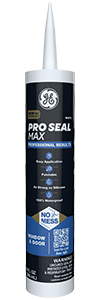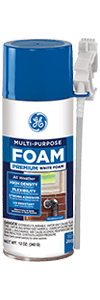Note: This DIY article is provided as a general guide only and is not intended to take the place of product-specific installation procedures; always follow applicable manufacturers’ instructions. Depending on your home’s age and condition, location within the home, and other potential factors, repairs and/or upgrades or other services may be necessary prior to the beginning and/or completion of your project that may involve the services of a home improvement professional. This article does not include advice pertaining to local building codes and/or any related inspections.
If you’re weighing spring cleaning projects this year, you might consider sealing your outdoor surfaces before rain, heat, and humidity take a toll on your home. Sealing outdoor surfaces helps prevent moisture intrusion, cracking, and material wear—especially in high-exposure areas like trim, patios, and foundation gaps. This guide highlights where to seal and which GE products to use for long-lasting protection.
Why spring is the right time for exterior maintenance
Spring offers the perfect conditions for sealing outdoor surfaces. After months of winter weather, many exterior materials show signs of wear—cracks, gaps, or loose sealant that can let in moisture. Early spring is a great time to address these issues before the rainy season sets in. Temperatures are typically moderate, which helps sealants cure properly and encourages better long-term adhesion.
Sealing in the spring also prepares your home for the heat and UV exposure of summer, which can accelerate material breakdown if gaps are left exposed. By acting now, you protect wood, concrete, and trim from water intrusion, pest entry, and sun damage. It’s a smart way to extend the life of exterior surfaces and minimize costly repairs down the line.
What to look for when inspecting outdoor surfaces
Before applying any sealant, thoroughly inspect your exterior surfaces. Look for visible signs of wear such as cracked or peeling sealant, gaps between materials, loose trim, or discoloration around joints. Common trouble spots include:
- Edges of windows and doors
- Siding seams
- Deck board joints
- Patio cracks
- Areas where pipes or vents penetrate the wall or foundation
Pay close attention to any material that has shifted, expanded, or contracted over the winter. Even small gaps can allow water infiltration, which leads to rot, mold, or pest intrusion if left unsealed. Check for soft wood, separation at corners, and old sealant or caulk shrinking or pulling away from the surface.
Where to seal and what products to use
Spring is the season to seal. Sealing outdoor surfaces early helps prevent water damage, pest intrusion, and UV wear. Use Pro Seal Max Window & Door, GE Concrete Silicone 2®, and GE Multipurpose Foam Sealant to protect wood, masonry, and foundation gaps—all season long. Built for the elements, trusted by the pros.
Targeting the right areas with the proper products is key to long-lasting exterior protection. Here are three high-exposure zones to seal this spring—and the GE sealants built for the job.
- Exterior trim, siding seams, and windows
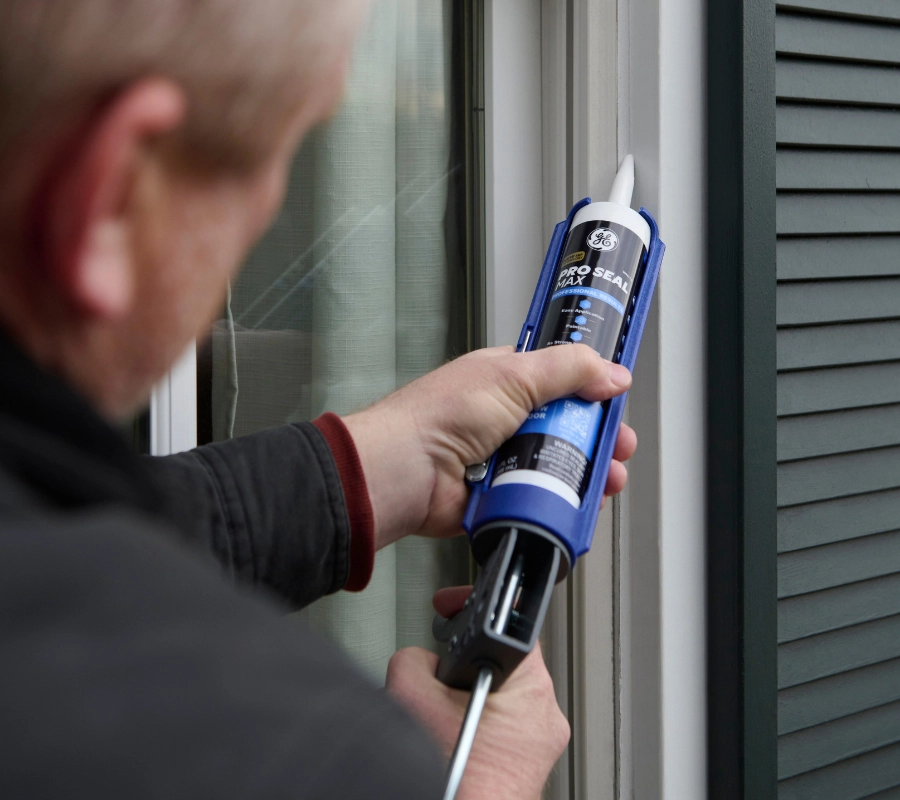
A photo of Pro Seal Max Window & Door Sealant used to seal a window. Trim and siding seams are prone to movement and water exposure. Use Pro Seal Max Window & Door Sealant—a 100% silicone sealant engineered for exterior applications. It offers Class 50 flexibility, resists shrinking and cracking, and becomes water-ready in just 30 minutes. Its strong adhesion works on wood, vinyl, fiber cement, and metal—ideal for windows, door frames, and joints that shift with temperature changes.
- Concrete patios and walkwaysOver time, concrete develops small cracks that allow water to penetrate and freeze, leading to further damage. GE Concrete Silicone Sealant is a durable, weatherproof option designed to bond directly to concrete, brick, and masonry. It offers permanent flexibility and resists UV, moisture, and extreme temperatures.
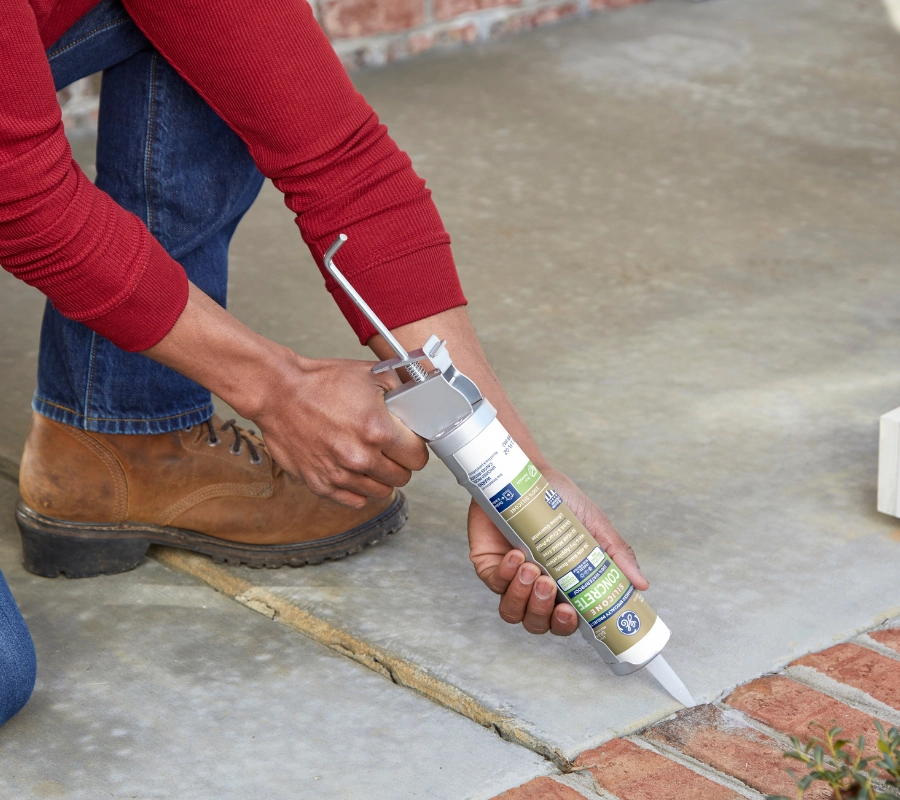
A photo of GE Concrete Silicone Sealant being applied to a crack in an outdoor concrete surface. - Foundation gaps, vents, and penetrationsOpenings around pipes, vents, and siding transitions are common entry points for moisture and pests. GE Multipurpose Foam Sealant expands to fill irregular gaps in wood, concrete, metal, stone, brick, and PVC. It cures into a weather-resistant, airtight barrier that helps improve energy efficiency while protecting against water intrusion.Unfamiliar with insulating foams? Learn what you need to know.
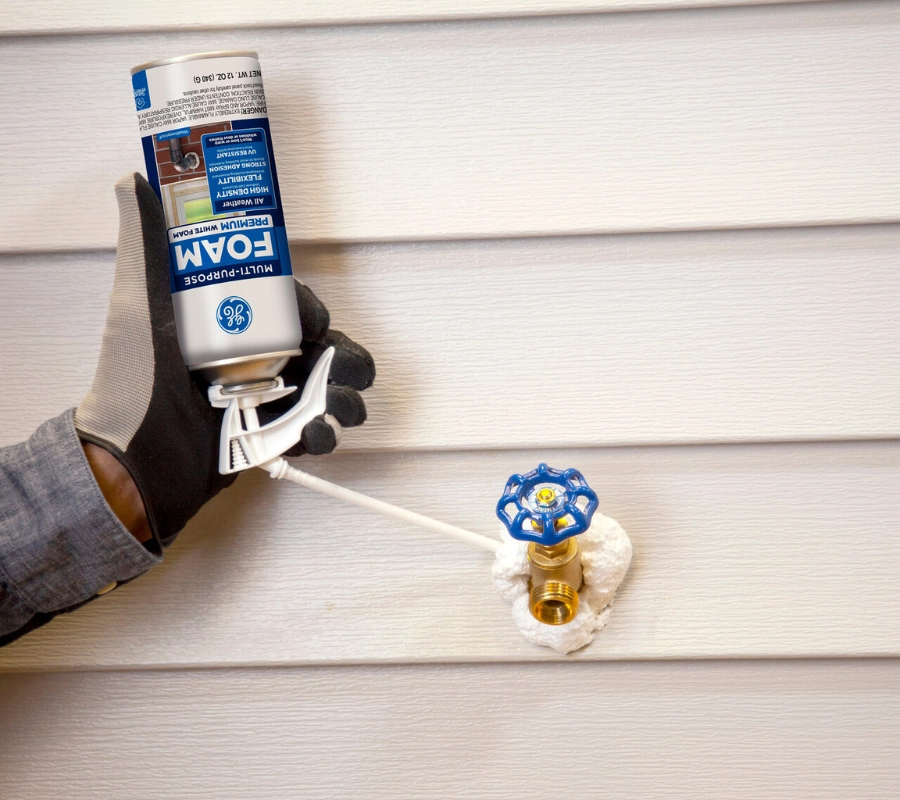
A photo of GE Multipurpose Foam Sealant being applied around an exterior pipe penetration in a foundation wall.
Application tips for outdoor sealants
Start by removing any old or damaged sealant using a tool like the GE Sealant Remover Tool. Clean the area thoroughly to eliminate dirt, mildew, and debris. For best adhesion, surfaces should be dry—though Pro Seal Max and GE Multipurpose Foam Sealant also bond to damp conditions if needed.
When applying silicone sealant, use painter’s tape along both sides of the joint for clean lines. Cut the nozzle at a 45-degree angle and apply a steady bead, pressing firmly into the joint. Immediately smooth the bead using your GE Smoothing Tool or a gloved finger, then remove the tape while the sealant is still wet.
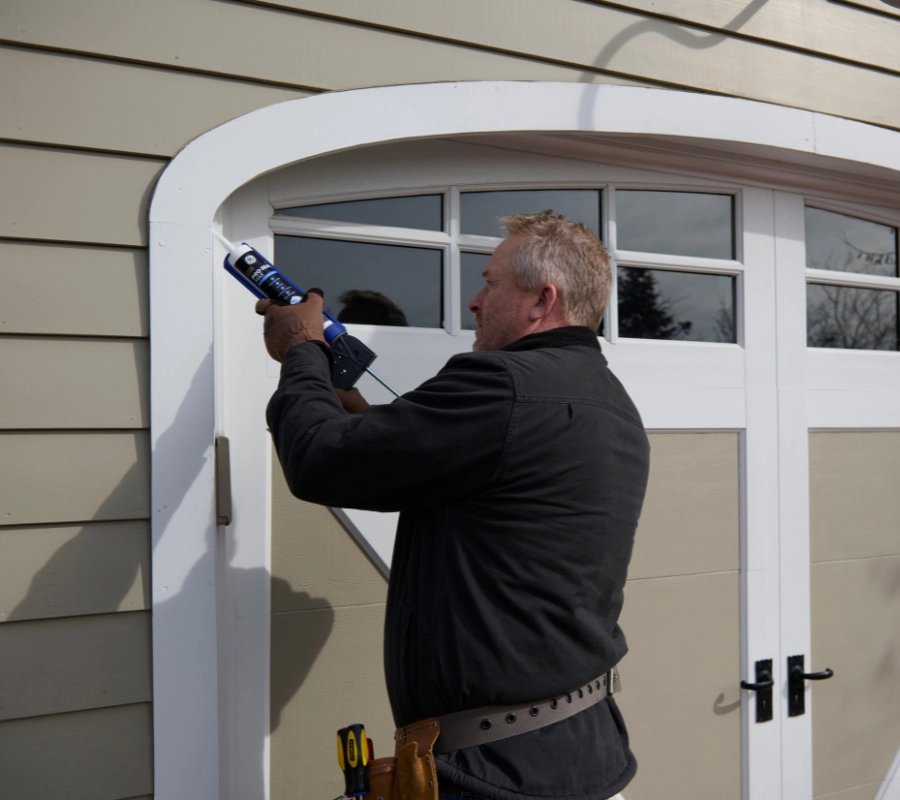
For foam sealant, shake the can well and apply in short bursts—the foam expands more than you might think. Fill only 50% of the gap and wait. After curing, trim any excess.
Benefits of regular exterior maintenance
Consistent exterior maintenance is one of the most effective ways to protect your home from long-term damage. Sealing outdoor surfaces helps block moisture, prevent rot, and stop pests from entering through gaps and cracks. When properly maintained, trim, concrete, and siding last longer and require fewer costly repairs over time.
Well-sealed exterior joints also improve energy efficiency by reducing air leaks around windows, doors, and foundation gaps. This helps keep conditioned air inside and outdoor elements out, contributing to lower utility bills year-round.
Learn more about sealing and insulating your home to reduce energy costs.
Beyond protection, sealing enhances your home’s appearance. Clean, finished joints give trim and masonry a polished look. Whether you’re a homeowner or a contractor, regular exterior sealing is a simple, proactive step in delivering long-term value.
To get GE Sealants’ products for your home improvement project, visit these fine retailers in the U.S. or Canada.


